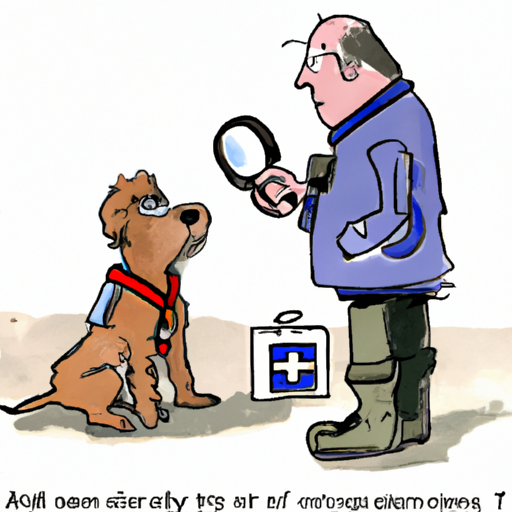As a caregiver, taking care of your furry companion is not just a duty, but a deep commitment that stems from the heart. One of the health issues that might befall your canine friend is a tapeworm infection. This is a detailed guide on how to treat tapeworm in dogs, written in the second person for you, the passionate caregiver.
1. Understanding Tapeworm Infection in Dogs
Before we delve into treatments, let’s first understand what tapeworms are and how they infect your dog.
Tapeworms are flat, segmented parasites that live in the intestines of some animals. Animals can become infected with these parasites when grazing in pastures or drinking contaminated water.
In dogs, the most common species of tapeworms is Dipylidium Caninum. This variety of tapeworm is transmitted to dogs who ingest fleas during grooming, which are themselves hosts to tapeworm larvae. Other species like Taenia and Echinococcus are contracted by eating contaminated rodents or uncooked meat.
Symptoms of Tapeworm Infection
- Visible segments or eggs in the dog’s feces
- Scooting or dragging the rear across the floor
- Excessive licking or biting at the anal area
- Weight loss despite a good appetite
2. Diagnosing Tapeworms in Dogs
Diagnosing tapeworms will typically involve a trip to the veterinarian. They will likely need to perform a stool analysis to confirm the presence of tapeworms. Here’s what that process might look like:
- Collection of a stool sample from your dog
- Examination of the sample under a microscope
- Identification of tapeworm segments or eggs
| Steps | Description |
|---|---|
| 1 | Collect a stool sample |
| 2 | Microscopic examination |
| 3 | Identify tapeworm segments/eggs |
3. Treating Tapeworms in Dogs
Once diagnosis is confirmed, the veterinarian will prescribe a course of treatment. This typically involves oral or injectable medication. Treatment options include:
- Praziquantel: An oral medication that kills tapeworms. It’s usually administered in a single dose.
- Epsiprantel: Another oral medication effective against tapeworms. It’s also generally given in a single dose.
- Fenbendazole: This oral medication is used to treat a variety of parasites, including tapeworms, and is generally administered over several days.
- Droncit Injectable: This is an injectable medication used to treat tapeworms.
4. Preventing Tapeworms in Dogs
Prevention is always better than cure. Here are a few strategies to prevent tapeworm infection in dogs:
- Regular flea treatment: Since fleas are often carriers of tapeworms, keeping your dog flea-free is a critical prevention strategy.
- Regular deworming: Consult with your vet about a regular deworming schedule.
- Proper hygiene: Regularly clean your dog’s living area and properly dispose of feces.
- Avoid raw meat: Feeding your dog raw meat can expose them to tapeworms.
5. FAQ on Tapeworms in Dogs
Q: Are tapeworms in dogs contagious to humans?
A: Yes, but it is rare. Humans can contract tapeworm from ingesting a flea or consuming undercooked or infected meat.
Q: How long does it take to get rid of tapeworms in dogs?
A: With proper treatment, tapeworms in dogs should be eliminated within 2-3 weeks.
Q: Can tapeworms in dogs return?
A: Yes, if your dog is re-exposed to the tapeworm larvae, the infection can return.
Through understanding, diagnosing, treating, and preventing tapeworms in dogs, you can ensure a healthier and happier life for your furry friend. Remember, when in doubt, always consult with a professional veterinarian.



